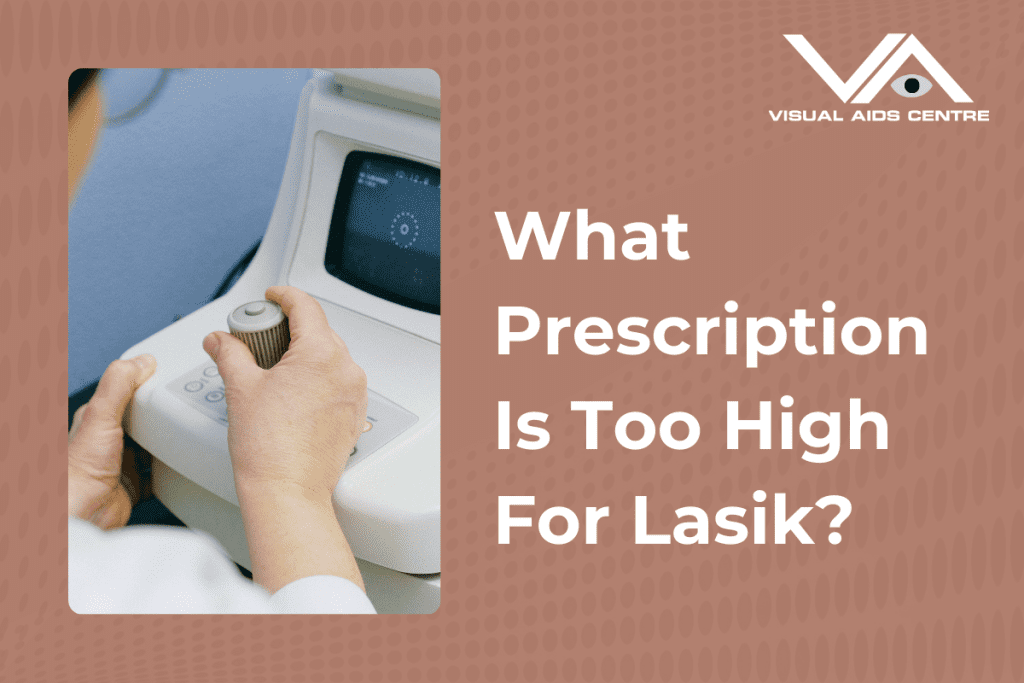Table of Contents
ToggleWhenever the discussion of vision correction comes up, LASIK (Laser-Assisted In Situ Keratomileusis) is often one of the first options that spring to mind. Revered for its effectiveness and quick recovery time, LASIK offers a beam of hope for many to do away with their glasses or contact lenses.
However, not all prescriptions are created equal, and there’s a cap on who can benefit from this miraculous modern technology without compromising the structural integrity of the eye.
For enthusiasts looking to explore the limits of what LASIK can correct and eyecare candidates considering the procedure, understanding the suitability criteria can help make informed decisions regarding your eye health.

Understanding LASIK and Prescription Limits
LASIK surgery works by reshaping the cornea—the eye’s clear, front window—to alter its focusing power, which in turn can reduce or eliminate the dependence on eyewear. The procedure uses a specialized laser to remove microscopic amounts of corneal tissue based on the individual’s prescription.
Considering Your Prescription
Your prescription reflects the degree of refractive error in your eyes, typically measured in diopters.
The higher the number in your eyeglass prescription, the more severe your refractive error. Also, these numbers are crucial in determining whether the LASIK procedure is a match for you.
LASIK can address common refractive errors like myopia (nearsightedness), hyperopia (farsightedness), and astigmatism.
High Prescription Thresholds for LASIK
Myopia (Nearsightedness)
For those with myopia, or nearsightedness, prescriptions may be measured in negative diopters.
Typically, LASIK can correct up to a range of -8.00 to -12.00 diopters, though this can vary depending on individual factors.
Hyperopia (Farsightedness)
Hyperopia, or farsightedness, is measured in positive diopters.
LASIK can usually treat prescriptions up to +6.0 diopters.
Again, the exact limit may differ based on a patient’s unique eye characteristics.
Astigmatism
Astigmatism is characterized by an abnormal curvature of the cornea.
Many LASIK surgeries can correct astigmatism up to 6.0 diopters.
Nonetheless, it’s the interplay of the prescription strength with corneal thickness and overall corneal health that ultimately guides a surgeon’s recommendation.
It is imperative to remember that exceeding these ranges does not strictly prohibit a candidate from receiving treatment, but it may increase the risk of complications, or lead to less predictable results.
Factors Beyond Prescription That Influence LASIK Eligibility
Corneal Thickness
One of the gating factors is the patient’s corneal thickness. During LASIK, a portion of the corneal tissue is removed. Therefore, individuals with thinner corneas might not have enough tissue for a safe operation, especially if they have a higher prescription.
To safely undergo the procedure, your corneas must be thick enough to be sculpted without compromising their structural integrity.
Typically, a corneal thickness of at least 500 microns is preferred.
Pupil Size
Large pupils could raise the risk of post-LASIK side effects, such as halos or glare, especially in low-light conditions. A thorough evaluation of your pupil size under dim conditions is a standard part of the LASIK assessment process as it can influence candidacy or lead to alternative recommendations.
Age and Stability
Most surgeons recommend that potential LASIK patients be at least 18 years old, and with a stable prescription for at least one year, to ensure the eyes have fully matured and settled.
Overall Eye Health
Patients with certain eye diseases, corneal abnormalities, or severe dry eye syndrome may not be suitable candidates for LASIK.
Alternatives to LASIK for High Prescriptions
If your prescription is outside the range for optimal LASIK results, there are alternative refractive procedures to consider:
- PRK (Photorefractive Keratectomy): Similar to LASIK but without creating a corneal flap, which makes it a better option for those with thin corneas.
- ICL (Implantable Collamer Lens): A micro-thin lens inserted over the natural lens, suitable for high degrees of myopia.
- Refractive Lens Exchange (RLE): This procedure involves replacing the eye’s natural lens with an artificial one, similar to cataract surgery. It is usually recommended for individuals with severe hyperopia or presbyopia.
These procedures come with their own sets of advantages and risks that should be evaluated alongside a qualified eye care professional.
Next Steps Towards Clear Vision
If you’re considering LASIK, start with a comprehensive eye examination by a licensed LASIK surgeon. During the consultation, discuss your full ocular history, prescription limits, and any concerns you may have. With the help of modern diagnostic tools, your surgeon will be able to gauge the appropriateness of LASIK for your eyes.
Remember, it’s not just about being within a certain prescription range; it’s about ensuring that the surgery will be safe and effective for your individual vision needs. The ultimate goal is to enhance your quality of life with improved vision, done in a way that prioritizes the long-term health of your eyes.
Summing Up
Determining if your prescription is too high for LASIK is a nuanced affair. Technology has indeed stretched the boundaries of who can benefit from the procedure, but there are limits. By understanding these parameters and exploring available alternatives, you can find a path to a better vision that is both safe and well-suited to your personal circumstances. With the right guidance and a focus on eye health, that dream of clear vision might just be within sight.
For further information and personalized advice, we encourage you to reach out to a LASIK specialist who can provide a detailed examination and discuss your specific vision correction options.
Your vision is priceless; make sure it’s in good hands.









